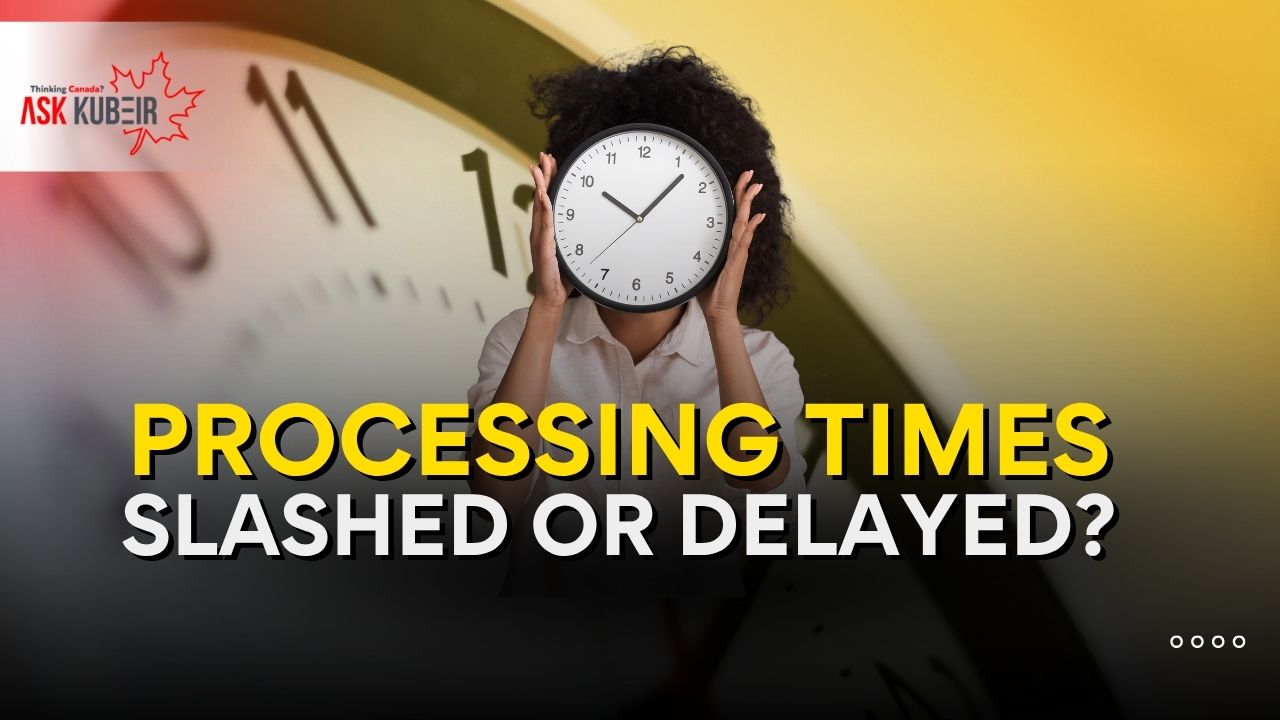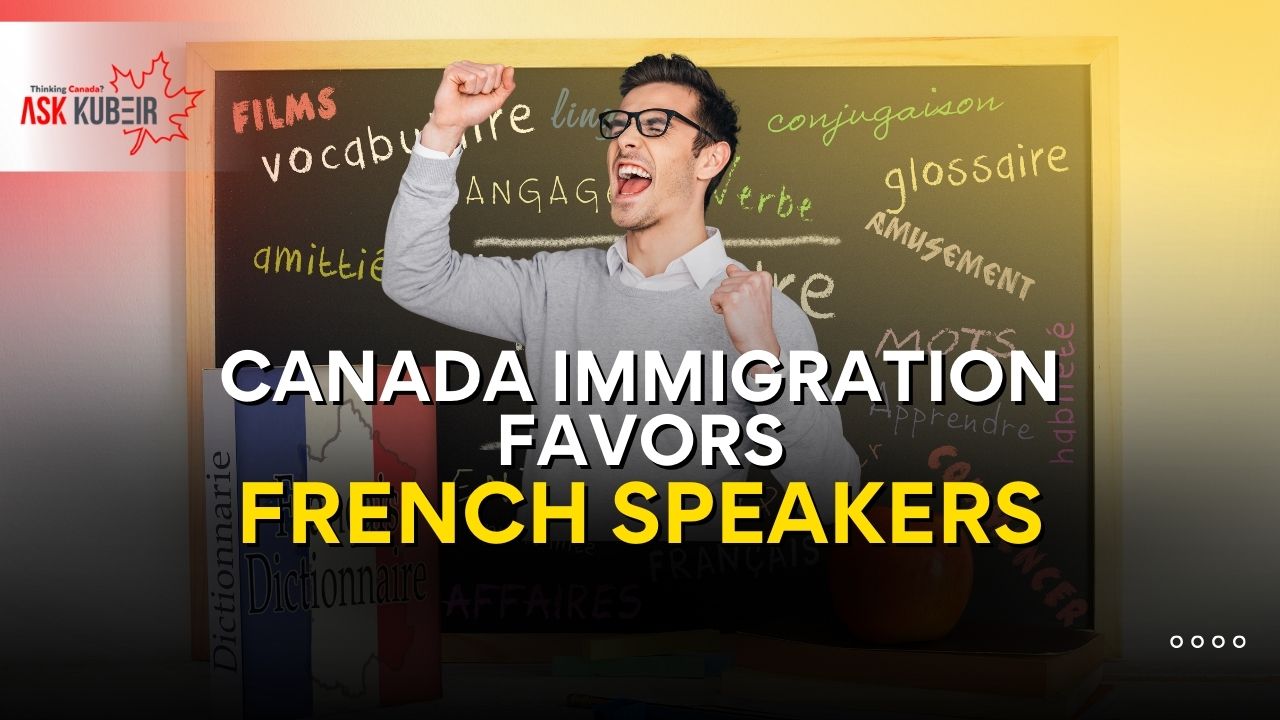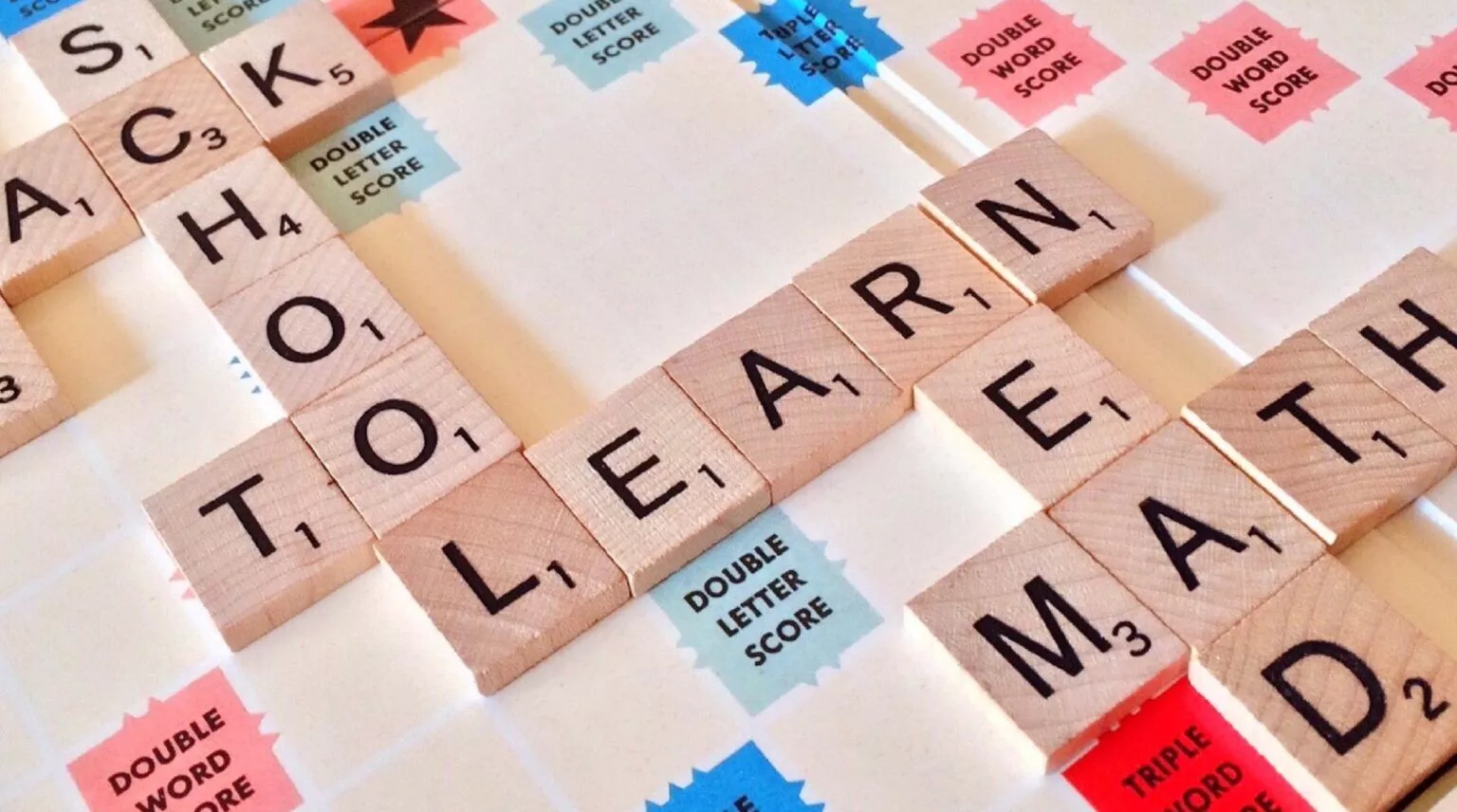
Related Post







Canadian Schooling System
Canadian Schooling system
“As an immigrating parent, understanding Canada’s school system is of fundamental importance — especially due to the gradation structure, age considerations & varieties available. If you’re coming from the UK or elsewhere, it’s very different and can be a confusing and often misunderstood.
OVERVIEW
Sans the Pvt Schools – Education in Canada is publicly funded and overseen by federal, provincial, and local governments. Which means, our children get to be educated for free. [I repeat]Schooling is provided without charge for all residents of Canada – they have a right to education.
Schools in Canada are generally divided into Elementary education, followed by Secondary or
“High School”. Within the provinces under the ministry of education, there are “District School Boards” administering the educational programs. These school boards would follow a common curriculum set up by the province the board resides in. Only Alberta allows public charter schools, which are independent of any district board. Instead, they each have their own board, which reports directly to the province.
Compulsory Education
Education is compulsory between the ages of 6 to 16 in every province in Canada, except
Ontario and New Brunswick, where the compulsory age is 18. Most children begin school at age 4, with part-time schooling called “Kindergarten”. The elementary school generally runs between grades 1 to 8, and Secondary [or] “high school” between grades 9 and 12.
Note:
– About one out of ten [1:10] Canadians do not have a high school diploma – one in seven [1:7] has a university degree – the adult population that is without a high school diploma is a combination of both immigrant and Canadian-born. In many places, publicly-funded high school courses are offered to the adult population.
– Canada spends about 7% of its GDP on education. Since the adoption of section 23 of the Constitution Act, 1982, education in both English and French has been available in most places across Canada (if the population of children speaking the minority language justifies it), although French Second Language [FSL] education/French Immersion is available to anglophone students across Canada.
THE SCHOOL YEAR
The school year runs from September to June, five days a week, for usually six hours a day. Canada generally has 190 school days in the year, officially starting from September (after Labour Day) to the end of June (usually the last Friday of the month, except some cases in Quebec when it is just before June 24 – the provincial holiday).
THE CURRICULUM
Canada has its own unique schooling standards – it is run neither as the UK, nor on the US patterns. The standard is intrinsic to its own culture, traditions & development strategies.
The curriculum is designed to elicit development and quality of people’s cognition through the guiding of accommodations of individuals to their natural environment and their changing social order. Some Canadian scholars view academics as a form of “soft power” – helping to educate and to create positive attitudes.
Furthermore, subjects that typically get assessed (i.e., language, arts, mathematics, and science) assume greater importance than non-assessed subjects (i.e., music, visual arts, and physical education) or facets of the curriculum (i.e., reading & writing versus speaking & listening). The students in the Canadian school system receive a variety of classes that are offered to them. The system is set up to meet the diverse needs of the individual student.
Advantages of Canadian schooling
– Canadian schools generally are more relaxed.
– They aim to nurture well-rounded individuals.
– Kids carry a backpack – but usually, don’t have much books or note-pads.
– Instead it’d have an Agenda [School diary] & two [2] Tiffin boxes [a Snack box & a Lunch box] – they get three [3] breaks a day!
– Students within walking distance from the school get to go home for lunch.
– Students afar [but within the neighborhood] get the school Transportation* – for FREE. – Many parents report that their children are happier and less stressed at Canadian schools than they were at their overseas schools.
*It’s a regulation that our kids go to their neighborhood schools [only].
TYPES OF SCHOOLS
There are multiple types of schooling available for our children in Canada:
1. Public Schools – The public school system in Canada is free. Children are not required to wear uniforms. -Free school
2. Catholic Schools – The Catholic school system is also free. Students here are required to wear uniforms. -Free school
3. Private Schools – Private schools charge tuition fees and can be expensive. Uniforms are required at most private schools. -Paid school
4. Ethnic Schools – Uniformed & Charged – they offer a specialized curriculum based on language, religion or ethnicity. Homeschooling5. Home schooling – Parents can choose to teach their children at home, but they are expected to meet the same standards of the public system.
Private Schools
Only about 8% of students are in private schools. A minority of these are “elite” private schools. It is not unusual for the wealthy and prominent in Canada to send their children
to public schools [Note: Not Private Schools], especially in the lower grades. Private schools are also used to study outside the country. Eg. Canadian College Italy has an Ontario curriculum, but the students study in Italy.
Private schools have historically been less common on the Canadian Prairies and were often forbidden under municipal and provincial statutes enacted to provide equality of education to students regardless of family income. This is especially true in Alberta, where successive Social Credit (or populist conservative) governments denounced the concept of private education as the main cause of denial of opportunity to the children of the working poor. These rules lasted longer than Social Credit; it was only in 1989 that private K-12 schools were allowed to operate within the boundaries of the City of Calgary.
Ethnic / Religious schools
Each province deals differently with private religious schools. Ontario has several private Jewish, Muslim, and Christian schools all funded through tuition fees. In other provinces many privately operated religious schools are funded [not all]. In British Columbia the government pays 50% of the cost of religious schools that meet rigorous provincial standards. The province has a number of Sikh, Hindu, Christian, and Muslim schools.
Alberta also has a network of charter schools, which are fully funded schools offering distinct approaches to education within the public school system. Alberta charter schools are not private and the province does not grant charters to religious schools. These schools have to follow the provincial curriculum and meet all standards, but are given considerable freedom in other areas. In all other provinces private religious schools receive some funding, but not as much as the public system.
Catholic Schools
In Ontario, the Catholic system continues to be fully publicly funded [akin to Public schools] – while other faiths are not. Since the Catholic schools system is entrenched in the constitution, the Supreme Court has ruled that this system is constitutional. However, the UNHRC has ruled that Ontario’s system is discriminatory, suggesting that Ontario either fund no faith-based schools, or all of them. In 2002 the government of Mike Harris introduced a controversial program to partially fund all private schools, but this was criticized for undermining the public education system and the program was eliminated after the Liberals won the 2003 provincial election.
Schooling in Quebec Vs. Other Provinces
Quebecers must attend a French School up until the end of high school, unless one of their parents previously attended an English-language school somewhere in Canada (immigrants from other countries cannot use this exception). In other provinces, English Speakers are not allowed to attend French Schools, unless one of the parent has the French language as mother tongue, but they can easily attend French Immersion Schools.
Age Vs. Grade in Canadian Schools
(Except the province of Quebec)
Which Grade my kids will be admitted to when we ‘land’?
Contrary to whatever Grade/Class/Std our kids were studying overseas [or in our homeland] as we ‘land’ here our kids would be taken into a Grade as per his/her age. Here is which grade they’d attend/admitted to, as per their age group…
Early childhood education
– Junior Kindergarten (ages 4–5)
– Kindergarten (ages 5–6)
Elementary education
– Grade 1 (ages 6–7)
– Grade 2 (ages 7–8) – Grade 3 (ages 8–9)
– Grade 4 (ages 9–10)
– Grade 5 (ages 10–11)
– Grade 6 (ages 11–12) – Grade 7 (ages 12–13)
– Grade 8 (ages 13–14)
Secondary education
– Grade 9 (ages 14–15)
– Grade 10 (ages 15–16)
– Grade 11 (ages 16–17)
– Grade 12 (ages 17–18)
– Grade 12+ (ages 18+)
NOTE:
1. Students in the Prairie provinces are not required by statute to attend kindergarten.
2. Kindergarten is not often available in smaller towns.
Which school [location] my kids will join?
By regulation, our children get to join the “neighborhood school” [unless we want them to go to a Pvt. School]. District School Boards demarcate school boundaries based on neighborhoods. And every neighborhood WILL HAVE certain no. of schools, both Elementary as well as Secondary [Yes, they are different School buildings/premises].
How will I know which school “belongs” to my neighborhood?
Yes, this could be tricky. Especially when you ‘physically see’ a school nearby, but on approaching u find that this one doesn’t cater to your locality. Usually, that school will guide u to the right school. However, u may also check the same by visiting the District School Board’s website. Eg. if you are in Toronto – hit TDSB, similarly, if you are in Mississauga/Brampton – hit PDSB. [U’d find those links below, at the end of this post]
How will my kids go to school from my residence?
If the school is within walking distance – we r to escort our kids to school every day… but, not necessary – ‘Coz, every Xing, street intersections will have “Traffic Marshals” [identifiable thru their security jackets] placed during the school hrs. This is Awesome here! – so, even if our kids walk alone – they r quite safe. Moreover, cycling to school is appreciated/advocated. And with the weather – this is no daunting task.
What if that school is 2 Kms away from my residence?
If the school is beyond walking distance [will be informed by the school] – the children get to take the “School Bus” – for FREE. Busses are operated by Pvt. Contractors, but especially for school transportation, colored Yellow, shall pick-up/drop our kids from vantage points [near our residence]… many times that could be next to the home as well. The Bus No. shall be informed to us by the school – we do not need to be perturbed on that aspect!
Rain or shine or Snow?
Not a problem! Kids here r used to sporting a ‘rain cape’ &/or carrying Umbrellas to school. Usually, they would also be wearing Rain Boots [call it Gum Boots – if u may]. And during the snowing season – they’d sport appropriate winter dress & Snow Boots [incidentally all these garments would be available everywhere during these seasons – Walmart, Canadian
Tire, Zellers, Sears et all shall suffice for our sourcing… & if in Toronto – u may hit the Honest Ed’s as well, for the more price-conscious among us!]
Will my kids be admitted to school whenever we ‘land’?
Typically the neighborhood school is duty bound to accept admittance of our children whenever we want to in Canada. Remember the school session commences from September to June… however, if we ‘land’ in October – yet the local school will take-in our kids. Ditto for any other months as well. Another eg. suppose we ‘land’ in April/May – School will be closing in June – still, our kids WILL BE accepted in the school.
What documentation is required for School Admission?
1. Child Immunization Record > http://www.canadavisa.com/canada-immigration-discussionboard/-t61790.0.html 2. School Transfer Certificate
3. Birth Certificate
4. Residential Lease Contract [or Home Purchase Deed]
What dress my kids will wear to school every day?
On a hindsight I guess many will again post this query… remember once again – Public Schools in Canada is w/out “Uniform” – our children will wear any appropriate dress [usual clothing] to school. An exception to this is the Catholic & Ethnic Schools – which require students to wear the prescribed uniform.
Which one is better – Public schools or Private Schools?
Another question many ask me – where should I get my children admitted to – Public Schools or the Private schools? Let me inform u with certainty that the curriculum, & standards of both r the same. Ditto the teachers & staff… they all come from the same basket, don’t they? These schools do have a great deal of prestige and prominence [there r many “elite” ones as well]… but that is all in the head! The fact remains that Pvt. Schools r attended by only a small fraction of students. Besides, they r often beyond our affordability, especially for newcomers. Then again, we chose to come to Canada especially considering ‘free education’ factor, among some others, didn’t we? IMHO, why to waste our funds, when many of the Illuminati actually came out of the Public Schools? BTW, Public schools in Canada are quite good!
How to locate/assess “good” Public schools?
Another myth [purely my opinion again] is “assessing” Canadian schools against each other. The factual position is that each one is typically the same – as described earlier… Nonetheless, if we need to yet perform this task, Fraser Institute “ranks” most schools in Canada. Check here:
http://www.compareschoolrankings.org/Index.aspx
Do I locate my residence based on “good” schools?
Again a debatable point… I would say “No”. As enumerated earlier, it doesn’t matter which school my kids go, at least in the Elementary stage/s. Lot other factors would determine where I chose to locate my residence, eg. my employment, proximity to friends/relatives, my ethnicity/religion [not advocated though, seriously!], cost of renting/buying, neighborhood assessment etc.
Quebec
– garderie (Pre-school); Age under 5
– maternelle (Kindergarten); Age 5-6
école primaire (literally Primary school, equivalent to Elementary School or Grade School)
– Grade 1; Ages 6-7 – Grade 2; Ages 7-8
– Grade 3; Ages 8-9
– Grade 4; Ages 9-10
– Grade 5; Ages 10-11
– Grade 6; Ages 11-12
école secondaire (literally Secondary school, or High School)
– Secondary I; Ages 12-13
– Secondary II; Ages 13-14
– Secondary III; Ages 14-15
– Secondary IV; Ages 15-16
– Secondary V; Ages 16-17
Note:
Secondaries I-V are equivalent to grades 7-11. High school students will refer to secondary 1-5 as year one through five. So if someone in Secondary three is asked “What grade/year are you in?” they will reply “Three” or “Sec 3”. It is presumed that the person asking the question knows that they are not referring to “Grade 3” but rather “Secondary 3”. This can, however, be confusing for those outsides of Quebec who are asking the question.
———————————————————————————————————————
So, what about “pre-school”? -before KG?
Daycare – a Nightmare!
1. Daycare could be quite expensive here, in Canada. It’d be difficult to find one which charges lower than $800-1000/month.
2. KG is part of the Public Schooling (it’s Free). Starts at 4 yrs. of age.
3. Typically, if we have kids below 4, either parent should remain at home* [works better vis-avis the daycare costs Vs. starter pays].
*my personal opinion – sure individual cases/requirements would differ.
City of Toronto: Daycare Brochure http://www.toronto.ca/children/pdf/guide.pdf
Daycare – Costs & Worries; News
http://www.thestar.com/comment/article/218181
CONCLUSION
Canadians believe that life is a marathon and not a 100-meters sprint. Children are encouraged at a young age to develop at their own natural pace. There is no streaming. Mentally-challenged children & gifted children are put in the same class as normal kids. Under this environment, Canadian kids learn to develop compassion towards the less fortunate and realize that the world comprises different kinds of people. Hence they grow to be less arrogant and less prejudicial.
It is mandatory for students to do part-time jobs or perform volunteer duties at seniors’ homes and other charity organizations in order to graduate from high school. The students get marks for doing charity or part-time jobs. It is not uncommon to see volunteers in the hospital reception areas, families picking litter on the streets, distributing food/clothing to the needy, volunteers in senior homes, even the mentally and physically challenged are taken care of by volunteers.
Canadians constitute less than 1% of the world’s population but provides 10% of the world’s peacekeeping forces in its selfless and unceremonious way. Volunteerism has become second nature to Canadians. 18 Nobel Prize winners, 405 Olympics medalists, plus hundreds of world-renowned entrepreneurs, inventors, artists, musicians, writers, actors, singers etc. stand testimony to a marvelous education system of Canada.
REFERENCES:
http://www.cic.gc.ca/english/resources/publications/welcome/wel-14e.asp
http://www.cmec.ca/Pages/Default.aspx http://en.wikipedia.org/wiki/Education_in_Canada
http://theonlinecitizen.com/2009/11/why-i-prefer-canadas-education-system-world-ranking-ornot/
http://www.learningfirst.org/node/2092 http://www.compareschoolrankings.org/Index.aspx?jid=ON
http://www.ontariohomeschool.org/
SOME SCHOOL BOARDS:
http://www.tdsb.on.ca/
http://www.vsb.bc.ca/
http://www.rbe.sk.ca/
http://www.emsb.qc.ca/en/index_en.asp
http://www.cbe.ab.ca/
Welcome to a scholastic sojourn !
